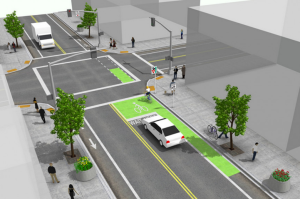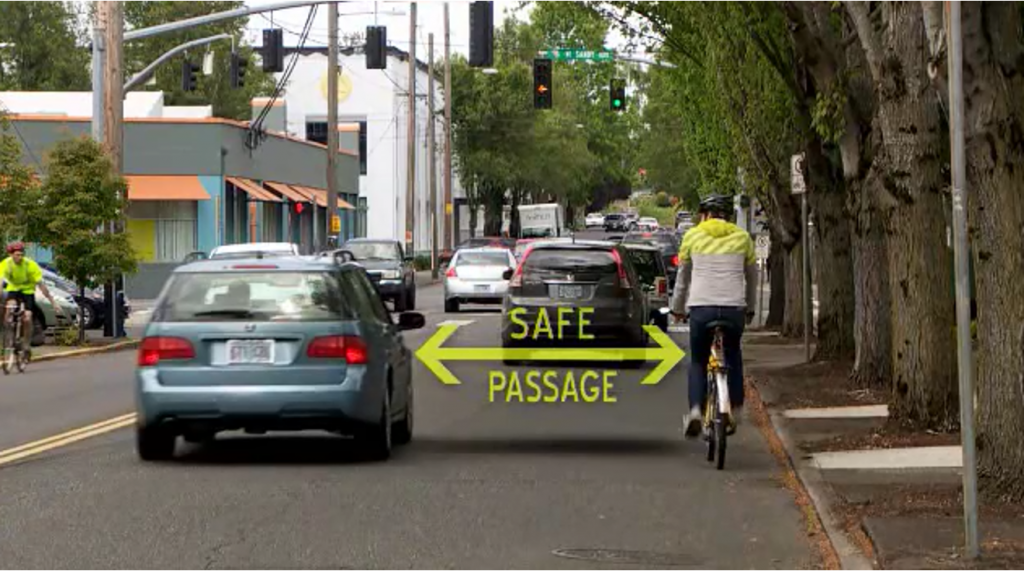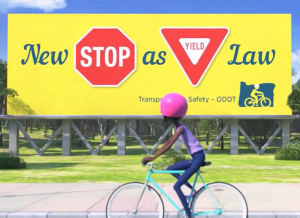Lesson Two: Cyclists (6.2)

Cyclists are considered vehicles and have the same responsibilities as any driver. Due to their size and the lack of protection, they are also considered vulnerable roadway users and we share the responsibility with them to ensure their safety. There are specific laws in place that govern how vehicles and cyclists interact with each other.
 Cyclists
Cyclists
Why Are Cyclists Vulnerable?
Motorized scooters come in many shapes and sizes and are also in the vulnerable user category. Scooters have limited speed and can legally drive in bike lanes and on bike paths.
 Bicycle
Bicycle
When passing a cyclist, you must pass at a safe distance in order to leave room so that if they fall you do not contact the cyclist. At speeds greater than 35 mph, you may only pass a bicycle traveling in your lane if you have enough distance to prevent contact with the bicyclist if they were to fall. If you cannot pass safely, you must slow down and remain behind the cyclist, until it is safe to pass.
Small children are especially vulnerable while on bicycles due to their inexperience. All riders can be unpredictable.
Be cautious in low-light conditions. Dark clothing, rain, glaring sun, and bright headlights affect drivers’ ability to see cyclists.
Stop as Yield Law
The State of Oregon enacted the “Stop as Yield” law in June 2020. This law allows people riding bicycles in Oregon to treat stop signs and flashing red signals as yield signs, if there are no other vehicles present. As cyclists approach an intersection with a stop sign or flashing red signal, they must slow down, search the intersection, and proceed, if safe. Cyclists must yield to crossing traffic. Cyclists must stop at solid red lights and cannot proceed until the light turns green.
to treat stop signs and flashing red signals as yield signs, if there are no other vehicles present. As cyclists approach an intersection with a stop sign or flashing red signal, they must slow down, search the intersection, and proceed, if safe. Cyclists must yield to crossing traffic. Cyclists must stop at solid red lights and cannot proceed until the light turns green.
How does the “Stop as Yield” impact your approach to an intersection?

Essential Question
-
How do you interact lawfully, safely, and courteously with cyclists?
Roadway users that are at greater risk in any collision with a vehicle.